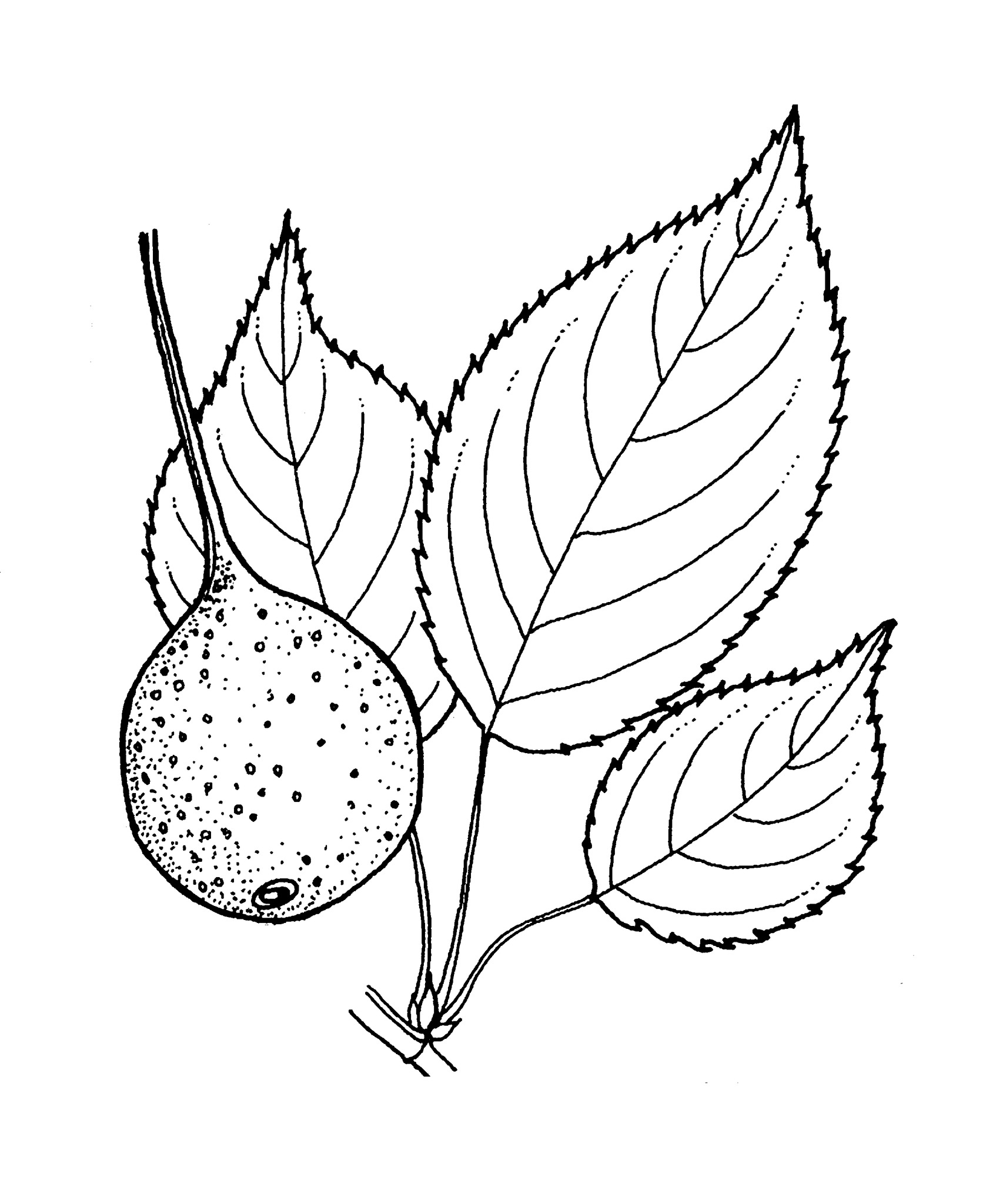
Tree to 12 m tall. Young shoots and leaves often with loose woolly hair at first. Leaves ovate to oblong, margin sometimes bristly saw-toothed. Leaf stalk 3-5 cm long. Sepals triangular to ovate, long-pointed. Flowers 3-3.5 cm wide, stalk thin. Styles and fruit chambers 4 or 5. Stamens 20. Fruits about 3 cm wide, more or less spherical, with pale brown dots.
Included here are the Nashi and many other recently introduced pears.
Numerous orchard cultivars are known under the collective name P. pyrifolia var. culta (Makino) Nakai which has longer and wider leaves and larger apple-shaped yellow or brown fruit. They are sometimes mistakenly assumed to be hybrids between apples and pears. The Nashi Pear (Twentieth Century Pear) industry was established in Australia in the 1980s, the main production area being the Goulburn Valley in Vic. These pears are harvested when ripe and ready to eat and do not discolour when peeled or cut. Cultivars include, 'Hakko', 'Hosui', 'Kikusui', 'Kosui', 'Niitaka', 'Nijusseiki' (the most widely grown Nashi cultivar in the Goulburn Valley), 'Shinsetsu', 'Shinsui', 'Ya Li' and 'Z Pear'. There is limited Nashi Pear production in New Zealand.
C and W China.
Young shoots woolly-hairy at first; leaves with sharply pointed saw teeth or the teeth with bristly tips; the fruits generally apple-shaped and brown, spotted with white.
SA: Adelaide (Himeji Gds; North Terrace garden beds). NSW: Mt Tomah (Bot. Gds, Brunet Meadow).
Source: (2002). Rosaceae. In: . Horticultural Flora of South-eastern Australia. Volume 3. Flowering plants. Dicotyledons. Part 2. The identification of garden and cultivated plants. University of New South Wales Press.
